Industries managing corrosive, abrasive, or hazardous fluids rely on chemical process pumps to keep operations running smoothly. From petrochemical plants and pharmaceutical facilities to fertilizer and food production units, they ensure safe and precise transfer of liquids critical to production.
The global chemical process pump market is expanding steadily, valued at USD 61.32 billion in 2024 and projected to cross USD 79.01 billion by 2029 at a CAGR of 5.2%. This growth reflects rising demand for reliable pumps designed to withstand harsh fluids, extreme temperatures, and strict industry regulations.
This guide explains how to choose the best chemical process pumps by exploring their role, selection parameters, types, and maintenance practices that guarantee performance, safety, and durability.
Key Takeaways
- Chemical process pumps are essential for handling corrosive, abrasive, toxic, and high-temperature fluids across industries like chemicals, pharma, food, and petrochemicals.
- Choosing the best chemical process pumps improves safety, efficiency, and compliance with environmental and safety regulations.
- Core parameters like flow rate, head, viscosity, density, and material compatibility determine pump suitability.
- Selecting the right materials such as SS316, Alloy 20, or Hastelloy is critical for resisting corrosion and erosion.
- Preventive maintenance ensures long service life, minimizes failures, and lowers overall operating costs.
Chemical Process Pumps and Their Importance
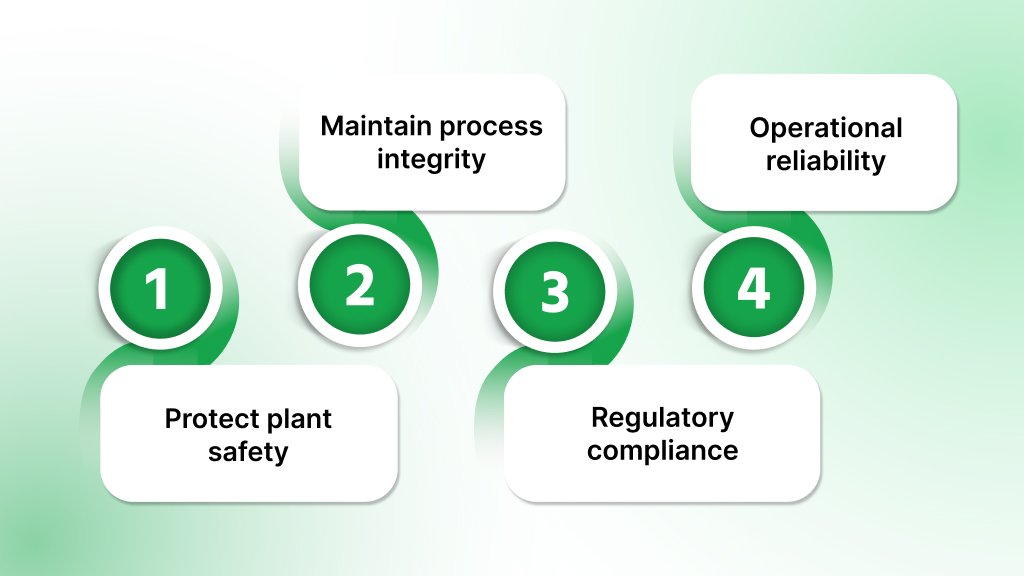
Chemical process pumps are engineered for precision, reliability, and safety when transferring aggressive fluids. Unlike standard industrial pumps, they are designed with specialized materials and sealing systems to handle hazardous chemicals, acids, slurries, and solvents without leakage or contamination.
Why chemical process pumps matter:
- Protect plant safety: Handle corrosive and toxic chemicals while preventing leaks and hazardous exposure.
- Maintain process integrity: Deliver consistent flow rates for precise chemical reactions and production standards.
- Regulatory compliance: Ensure pumps meet API, ANSI, and ISO standards for safety and environmental responsibility.
- Operational reliability: Resist corrosion, cavitation, and wear, minimizing downtime in demanding environments.
To ensure you choose the best chemical process pumps, consider the core technical specifications that drive performance and reliability in chemical process applications.
To make an informed choice, start by considering the key factors that determine the efficiency and reliability of chemical process pumps.
How To Choose Best Chemical Process Pumps?
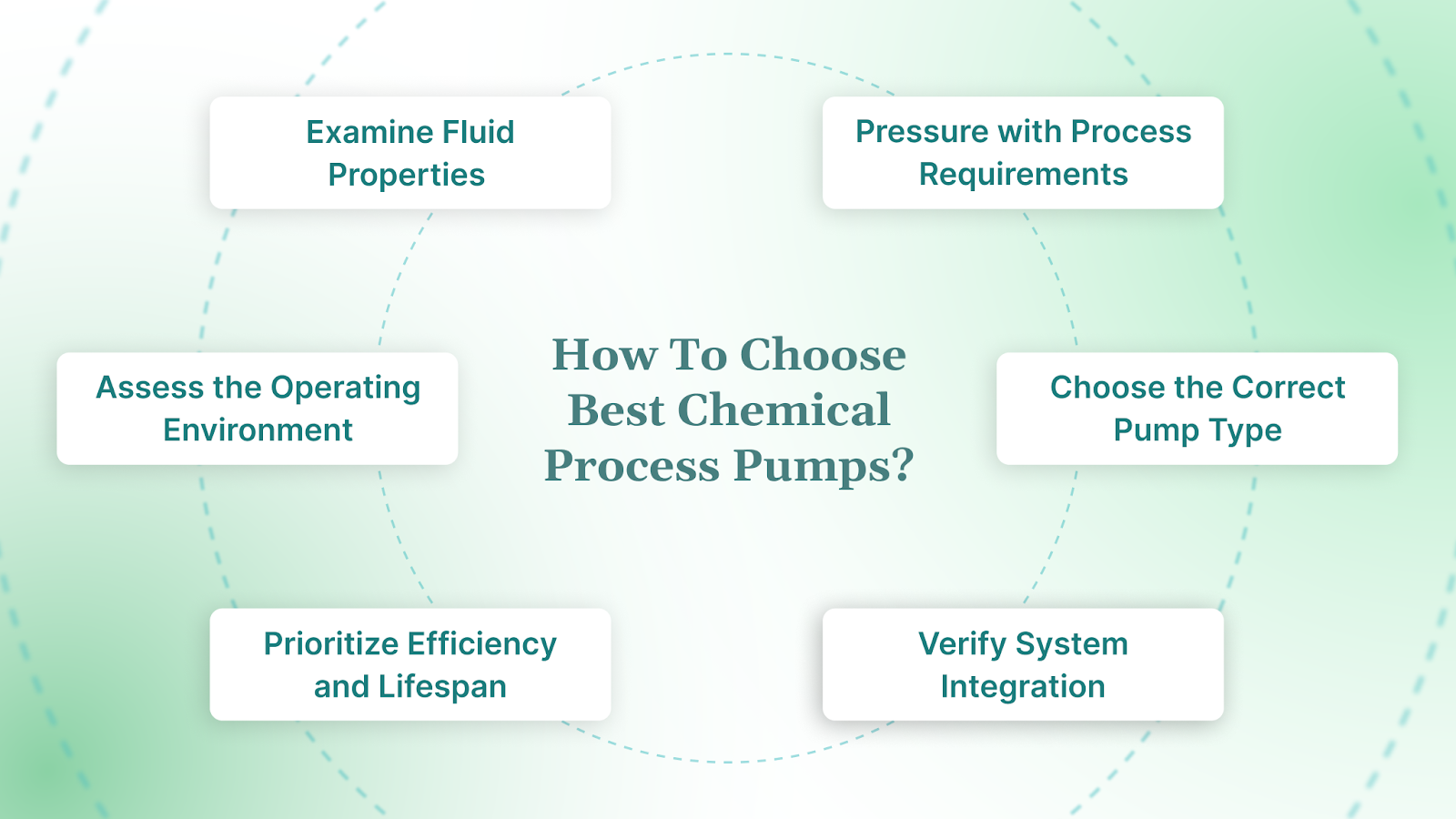
Selecting the best chemical process pumps require more than simply matching flow and pressure ratings. It involves ensuring the pump can handle the unique chemical, thermal, and mechanical conditions of your operation while delivering maximum reliability, safety, and efficiency.
Below are the key factors to consider when choosing top-quality chemical process pumps.
1. Examine Fluid Properties
Chemical process pumps must be compatible with the characteristics of the fluid being handled. A detailed evaluation helps prevent performance issues, premature wear, and downtime.
Important aspects to review:
- Viscosity: Thick or sticky fluids need more power; positive displacement pumps are generally better than centrifugal pumps for these applications.
- Abrasive or Corrosive Nature: Fluids with solids or extreme pH levels require wear-resistant coatings, specialized liners, or corrosion-resistant alloys.
- Temperature and Vapor Pressure: Very high or low temperatures can harm seals and bearings, while low vapor pressure increases cavitation risk, necessitating specific impeller designs or NPSH checks.
- Density: Heavier fluids demand more motor power and must be accounted for during pump sizing.
- Solids Content: Suspended particles may require pumps designed for slurry or solid-laden fluids.
2. Align Flow and Pressure with Process Requirements
The pump must deliver the required capacity under actual operating conditions, not just theoretical values. Correct sizing ensures smooth, uninterrupted operation and avoids overloading.
Key considerations:
- Flow Rate: Assess both steady-state and peak demand in GPM or m³/h.
- Pressure Needs: Include static lift, friction losses, valve restrictions, and any elevation changes to calculate total dynamic head.
- System Design: Improper piping or layout can lead to cavitation or energy inefficiency; ensure pump suitability for the network.
3. Assess the Operating Environment
Environmental and process conditions can significantly affect pump performance and longevity. Evaluating these factors minimizes risk and helps maintain reliable operation.
Factors to consider:
- Ambient Conditions: Extreme temperatures, humidity, dust, or chemical exposure can affect coatings, lubricants, and electrical systems.
- Process Challenges: Sudden pressure spikes, corrosive vapors, or hazardous chemicals can increase wear and stress.
- Regulatory Requirements: Ensure compliance with API, ANSI, ISO, and other applicable safety and environmental standards.
4. Choose the Correct Pump Type
Different pumps such as metallic or non-metallic technologies excel under specific conditions. Selecting the right type ensures efficient handling of chemical fluids, required flow, and system pressures.
Options include:
5. Prioritize Efficiency and Lifespan
Looking only at purchase price can increase long-term costs. Considering efficiency, durability, and maintenance needs ensures better value over the pump’s lifetime.
Key points:
- Energy Efficiency: High-performance designs, often paired with Variable Frequency Drives (VFDs), optimize energy consumption for fluctuating process needs.
- Total Cost of Ownership: Include installation, spare parts, maintenance, downtime, and energy usage in your calculations.
- Reliability: Pumps that are easy to service and maintain minimize downtime and prolong operational life.
6. Verify System Integration and Compatibility
Even a high-quality pump can underperform if it doesn’t integrate properly with the process system.
Areas to check:
- Infrastructure Fit: Confirm piping connections, flange sizes, and electrical supply compatibility.
- Customization Options: Impellers, seals, and materials can be tailored to match chemical and process-specific requirements.
- Installation Practices: Follow manufacturer guidelines for alignment, foundation, and piping to prevent vibration and premature wear.
- Maintenance Planning: Scheduled inspections and timely part replacements enhance reliability and prevent unexpected failures.
Once the best chemical process pumps is selected, following a structured maintenance program ensures safe, reliable, and efficient operation over time.
Tips To Maintain Chemical Process Pumps
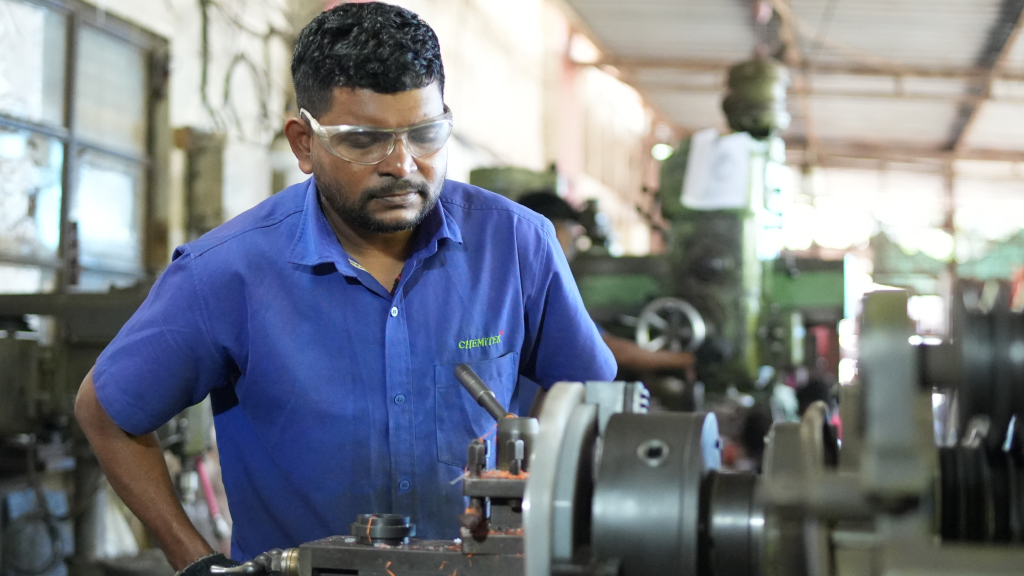
Keeping chemical process pumps in good condition is essential for safe fluid handling, stable performance, and long service life. Because these pumps operate with corrosive and hazardous liquids, their upkeep must be carried out carefully and at regular intervals.
Here are the key practices to follow:
- Carry out routine visual checks for leakage, unusual sounds, excessive vibration, worn seals, or fluctuations in motor load to detect early signs of chemical damage or mechanical stress.
- Verify alignment and balance of rotating parts, ensuring vibration levels stay within recommended limits (generally <4.5 mm/s RMS) to avoid premature wear and energy losses.
- Track operating data such as discharge pressure, flow rate, and absorbed power against reference values to identify issues like cavitation, scaling, or internal wear.
- Replace consumable parts on schedule, including bearings, seals, impellers, and fastening elements, to prevent unplanned stoppages and leakage of hazardous fluids.
- Keep essential spares in stock, especially corrosion-resistant seals, gaskets, and impellers, to allow fast turnaround during maintenance or unexpected breakdowns.
- Rinse and flush pumps after exposure to aggressive fluids to prevent crystallization, residue buildup, or surface corrosion.
- Check the condition of pump materials and linings (SS316, Alloy 20, Hastelloy, PTFE) for pitting, erosion, or chemical attack, replacing them when deterioration is visible.
- Monitor hydraulic conditions such as NPSH and total dynamic head to ensure pumps run within safe ranges and to prevent cavitation when transferring volatile chemicals.
- Confirm compliance with industry standards (API, ANSI, ISO) and verify that seals and wetted parts are still suitable for handling corrosive, toxic, or food-grade chemicals.
- Ensure design accessibility, so that wear components like impellers, bearings, and seals can be serviced or changed without dismantling the entire unit, saving time during plant operations.
Are chemical transfer issues slowing down your plant operations? With Chemitek’s chemical process pumps, designed from SS316, Alloy 20, Hastelloy, and PTFE linings, you can count on safe, efficient, and long-lasting performance even in the harshest environments.
Chemitek: Your Partner for Reliable Chemical Process Pumps
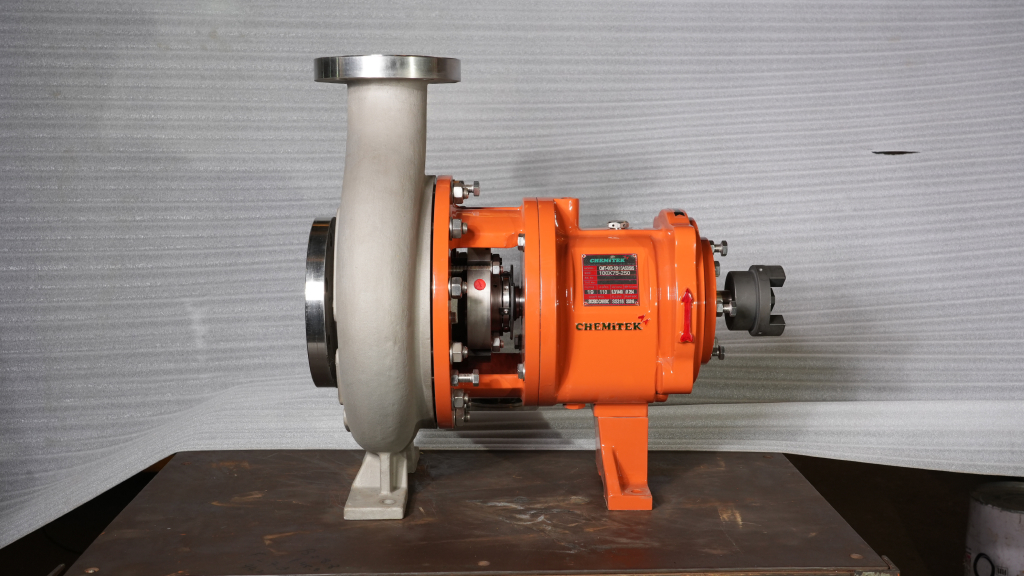
At Chemitek Process Equipment Pvt. Ltd., we design chemical process pumps using premium alloys like SS316, Hastelloy, Alloy 20, and PTFE linings. Our pumps comply with ANSI-compliant/ASME B73.1 standards, ensuring safe, efficient, and long-term performance.
With a wide range of centrifugal, magnetic drive, and slurry pumps, we provide solutions tailored to corrosive, abrasive, and hazardous chemical handling. Our team offers end-to-end support from pump selection and system integration to installation and preventive maintenance.
Get in touch with Chemitek today for customized chemical process pump solutions that ensure safety, efficiency, and reliability.
FAQs
1. Why are chemical process pumps different from standard pumps?
They are specifically engineered with corrosion-resistant materials, advanced sealing systems, and robust designs to safely handle hazardous, abrasive, and aggressive fluids under demanding conditions.
2. Which pumps are best for highly corrosive chemicals?
Magnetic drive pumps or lined centrifugal pumps made with materials like PTFE, Alloy 20, or Hastelloy are ideal for safely transferring highly corrosive fluids without leaks or contamination.
3. How can cavitation be prevented in chemical process pumps?
Maintain adequate NPSH margins, optimize the piping layout, and use impellers designed to reduce cavitation risks for consistent and reliable operation.
4. What materials are commonly used in chemical process pumps?
Materials such as SS316, Alloy 20, Hastelloy, and PTFE linings are widely used to resist corrosion, erosion, and chemical attack, ensuring long-lasting pump performance.
5. How frequently should chemical process pumps be maintained?
Regular weekly inspections combined with scheduled servicing of seals, bearings, and impellers help maintain reliability, prevent unexpected downtime, and extend pump life.
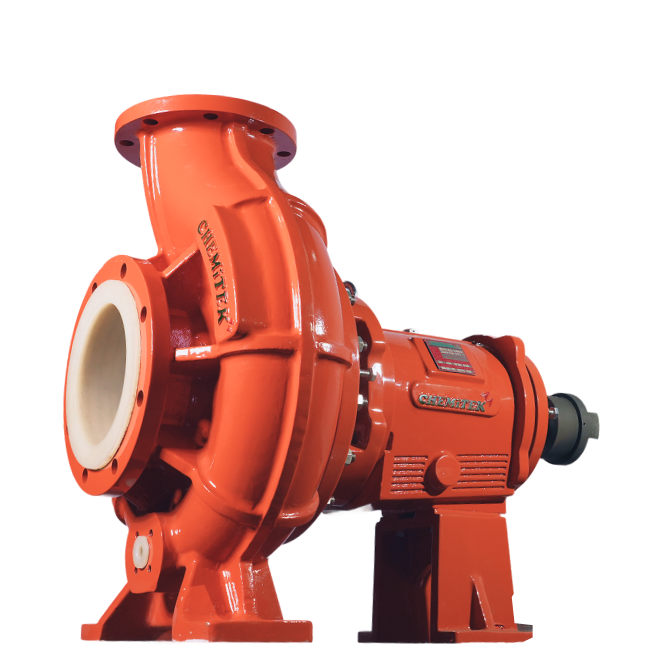
Latest posts
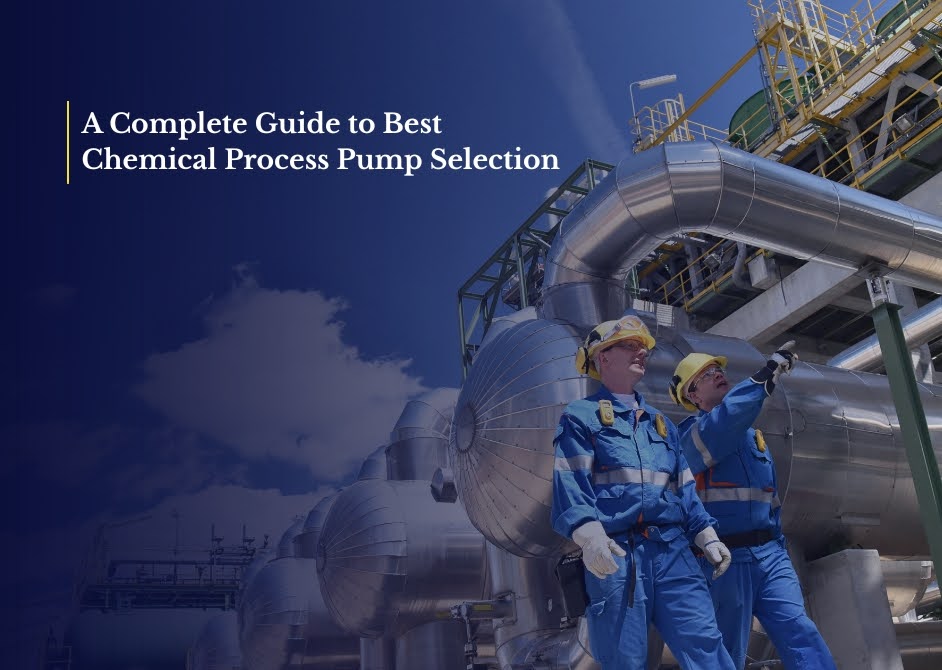
A Complete Guide to Best Chemical Process Pump Selection
Ready to Upgrade Your Process Operations?